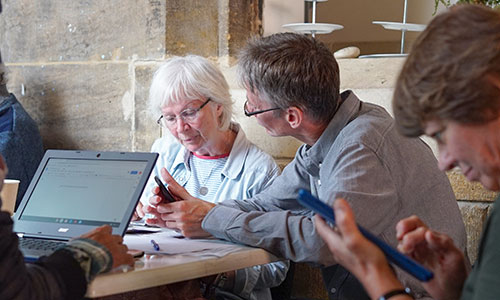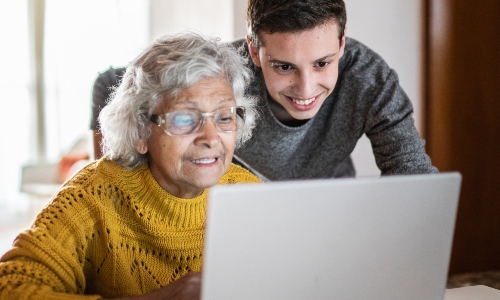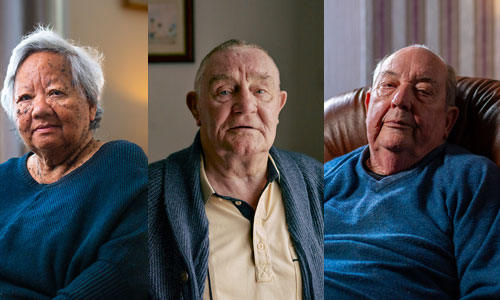I love my smartphone. I do almost all of my work on it, as well as my banking, booking a holiday, and keeping up to date with the trials and tribulations of my beloved football club, Reading FC.
 The digital revolution has swept along at a terrifying pace, and for many, it’s a huge step forward. But for many older people, the digital revolution is an exercise in exclusion, not inclusion.
The digital revolution has swept along at a terrifying pace, and for many, it’s a huge step forward. But for many older people, the digital revolution is an exercise in exclusion, not inclusion.
Wired out of society
In the past few weeks, the exclusion list is growing fast. First the banks, with branches closing before the banking hubs were in place. Then an outcry about parking, Blue Badge applications, and booking airline tickets. And now ticket machines in stations. Even worse, it's hard to avoid the conclusion that for older people who aren't proficient with computers, this situation is being exploited to charge them over the odds.
If you don’t have a smartphone, what do you do? If you can’t use one because it’s physically difficult, or because no one has ever taken the time to explain it to you, you are scuppered. And if you can’t use the banking app, how long do you have to wait to talk to someone, being told “your call is important to us” while you wait and wait at an ever-growing cost? It’s an inconvenient truth in the drive for efficiency, but it feels like many older people are being wired out of society.
It doesn’t have to be like this. We should be using the boon of new technology to expand choice, not narrow it, and as a means of reducing prices, not raising them for parts of the population that aren't onboard – particularly for older people who often can’t afford to pay more.
Offline and Overlooked
Older people who aren't or choose not to be online are being locked out of essential services. We're campaigning to make sure everyone can access the services they need.
What does digital inclusion mean for older people?
A few weeks ago, I visited Age UK Ealing. Many of the people who use their services are in their 70s, 80s, and 90s. When our colleagues asked those who used the services, only 3% said they felt comfortable in the digital space.
As a result, Age UK Ealing have set up a digital inclusion programme. It starts with the basics of how to get to grips with a mouse or tablet, before moving on to help people access support in a safe way, including tips on how to avoid scams. When I was in Bognor Regis a few months ago visiting Age UK West Sussex, their digital inclusion group had moved on even further and were learning about family history online.
National surveys show that virtually all younger people use the internet, but this reduces with age and those aged 75+ are the least likely to be online. And while internet use, including among those aged 75+, has increased over recent years, a substantial number of older people are still not online.
Age UK works nationally and locally to support older people to gain and extend digital skills. We have long argued that most older learners need ongoing support, tailored to their needs and preferences. An effective approach is using Digital Champions – staff and volunteers who have been trained to have the skills and knowledge that they need to support older people in their community. Digital Champions might support an older person with tasks such as how to make video calls, how to do their shopping via a tablet or computer, or how to pursue their hobbies online.
Many local Age UKs also run their own digital support services. We welcome the support that we receive nationally and locally from businesses and other funders, but we could do much more with greater resources.
“The internet is so huge that people think, 'I can't do it'.”
Find out more about our Digital Champions programme and the importance of accessing technology with Ruth, Jean and Dereck in our series of videos.
From exclusion to inclusion
I think there are three ways to bridge the gaps to reduce digital exclusion and increase digital inclusion.
First, listen to what older people want. Start with the basics, and then move to what people are looking for. Reordering a prescription is easy on the NHS App once you know how to use it, but the NHS should help people learn about the way the app works.
Secondly, it’s about choice. Apps are fantastic, but they’re not for everyone. Keep those phonelines open and properly staffed, so that people can talk to a human if they want to. Most people won’t, but a lot of your most loyal customers will.
And thirdly, embrace the future. The scope for technology to help and support older people is huge in healthcare, financial security and improving wellbeing. Many older people would have had far worse mental health during pandemic lockdowns without the use of video calling software to talk to family members. But design the future with older people in mind, rather than selling things people can’t use or don’t want.
We can get the best from new technology as a society, while at the same time protecting the interests of those who understandably feel disadvantaged because of being left behind. These people, who are often older, are being excluded over and over again – an injustice that urgently needs to change.
Make technology work for you
From video calling to online banking, learn how to get the most from the internet with our information and advice.





